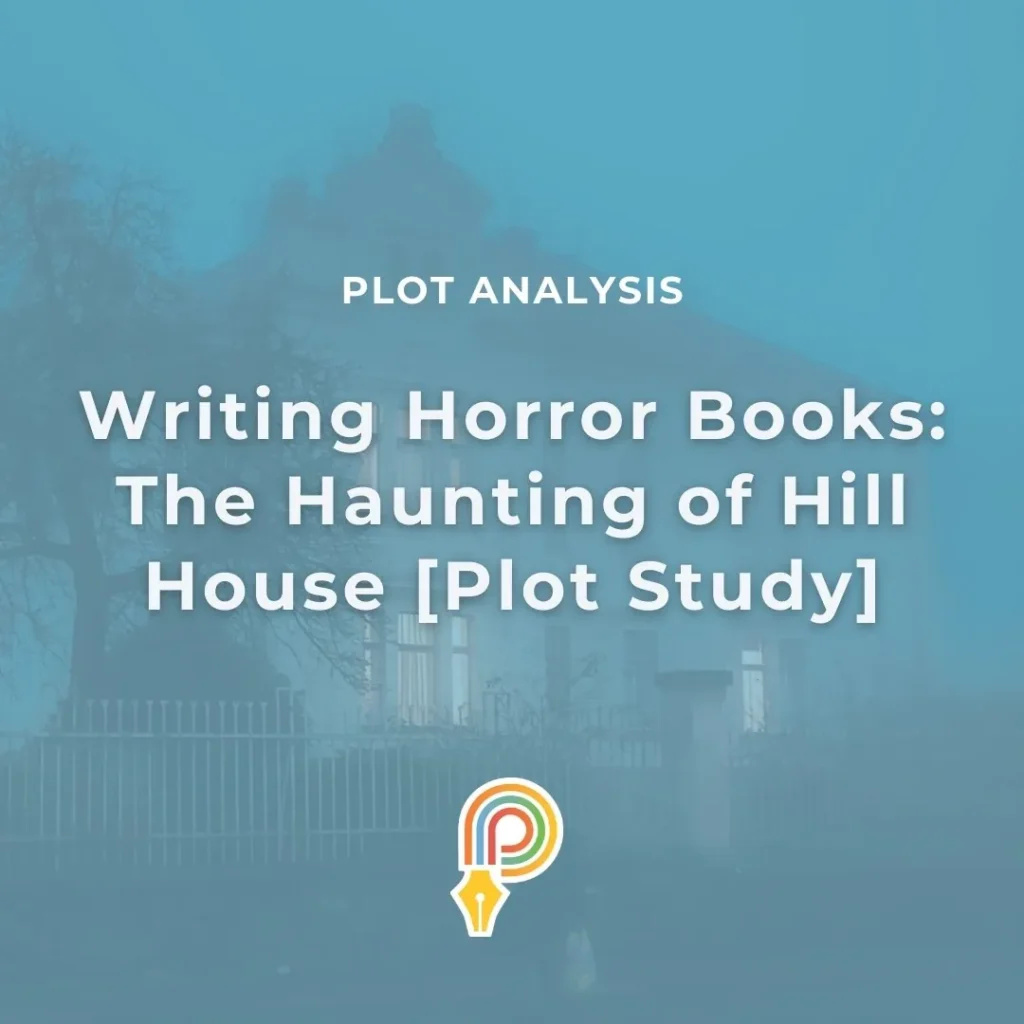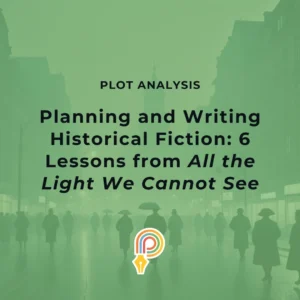Writing horror books allows you take your imagination to thrilling, chilling places. Explore writing Gothic horror as we study a classic of the genre, The Haunting of Hill House by Shirley Jackson. Keep reading to learn why this is one of the best creepy haunted house stories (and how you can write better horrors with Plottr).
What is The Haunting of Hill House?
Haunted house and ghost stories have a long, rich history. As far back as 3,500 BC there were depictions of ghosts. The Haunting of Hill House by Shirley Jackson (1959) is a modern classic. It was a finalist for the National Book Award and was adapted in two feature films as well as a Netflix series loosely based on the plot. Jackson is also famous for her short story “The Lottery,” which also subtly explores the darker aspects of human nature.
The Haunting of Hill House describes a “study” where a Doctor of Philosophy, John Montague, enlists participants to stay at a creepy manor over one summer. The catch? The house has a long, unsettling history of madness, inexplicable phenomena, and untimely deaths.
If you’re wondering how this novel illuminates writing horror books, file this one under “atmospheric” rather than “gory.” There aren’t gut-churning scenes of violence. Instead, Jackson creates a sense of unease and foreboding through atmospheric description and her characters’ fragile psyches.
Download the Plottr demo file here. Keep reading to learn how the story fits elements of both three-act structure and the horror beat sheet.

Why Study Creepy Haunted House Stories?
There are many benefits to swinging open a creaking gate to explore creepy haunted house stories. The Haunting of Hill House gives many lessons in writing horror books, such as:
- How to write a horror novel that relies on slow-burn atmosphere and unsettling character dynamics more than gross-outs.
- How to describe places so that they are full of atmosphere and character.
- Ways to blur lines between perception and reality. Part of the fun of The Haunting of Hill House is that at times it isn’t conclusive what is supernatural and what is in characters’ minds.
Ready to explore more? Let’s go.
Plot Summary of The Haunting of Hill House
The Haunting of Hill House is a shorter horror title at 64,597 words (source here). The book spans nine chapters as it details various characters’ arrival at the house and the paranormal events that unfold:
[Spoilers ahead]
Chapter 1 (Introducing the Cast and Hill House)
Jackson introduces the reader to key characters, starting with Dr John Montague, who has spent his life looking for a genuinely haunted house and has rented out Hill House for three months.
Montague contacts people who have had prior brushes with the supernatural or have demonstrated psychic abilities. He invites them to take part in the study, disclosing only a little about its purpose (but little of the house’s full, sordid history).
We meet Eleanor Vance, a 32-year-old woman who has cared for her invalid mother for the past eleven years until her mother’s passing. Theodora (AKA “Theo”). She answers the invite out of curiosity, but a fight with her flat-mate spurs her to accept. Then Luke, heir to Hill House whose aunt (the current owner) sees as a liar and a thief. Luke’s aunt makes his inclusion in the study a condition of the rental going ahead.
Eleanor stops in the nearby town Hillsdale along the way. The locals are tight-lipped and unfriendly. The chapter ends with her arrival at Hill House, “welcomed” by a sneering caretaker and his sullen wife. She notes the house has a diseased air and wants to turn back.
Chapter 2 (Entering Hill House and Theo’s Arrival)
Eleanor enters the house and is shown to her upstairs room, The Blue Room. The caretaker Dudley’s wife warns her that she won’t be around to help in the night.
Theodora, one of the other study participants, arrives to Eleanor’s relief. They joke about the sour Mrs Dudley and put on brighter clothes to counteract the dark of the house.
They venture outside and find a fairy-tale like brook away from the house, though Eleanor jumps at sudden movement. Theo reassures her it was just a rabbit, and calms Eleanor’s fears she won’t be able to finish the study.
Chapter 3 (Luke and Dr Montague Arrive and Hill House’s History)
Luke Sanderson and Dr Montague arrive at Hill House last, with Luke waiting outside when Eleanor and Theo return. They ask Dr Montague to tell them more about the house, but he puts them off until after dinner.
After dinner, Montague tells them the history of the original builder and owner of the house, Hugh Crain. How Crain’s wife died when her carriage overturned as it approached the house, leaving him to raise two young daughters, and how tragedy and eerie incident after incident continued.
Montague shares how the elder Crain daughter lived at the house with a female companion from the village. After the daughter’s death, the companion lived in the house but the younger sister and local rumor hounded her until she hung herself from the house’s library tower.
Hill House was left to the Sanderson family by the companion, a cousin. Later, Theo asks Eleanor about looking after her mother and what she does now with her greater freedom. Later in her room, Eleanor locks her door and thinks she sees the door moving.
Chapter 4 (Exploring Hill House and Noises at Night)
The group meets for breakfast the next morning, where Dr Montague reveals that doors they’d propped open swung shut by themselves.
They set about exploring the house, and Eleanor notices a foul odor coming from the library. Dr Montague tells them that Crain designed the house so that every angle is just slightly off, adding to its disorienting feeling.
Later, they find an inexplicably cold spot in the doorway to the house’s nursery. Outside on the veranda, Eleanor gets dizzy and nearly falls over the railing.
Late that night, Eleanor hears her deceased mother calling her and rushes to Theo’s room. They hear loud banging coming down the row of doors leading to their room. Luke and the doctor arrive and say they couldn’t hear the banging, but said they were chasing a dog-like creature which led them to the room.
Chapter 5 (Writing on the Wall)
The next morning, Eleanor says she can’t really remember being afraid. While Luke is getting coffee, he sees the words, “HELP ELEANOR COME HOME” written in chalk across a wall.
The party is anxious. Later, Theo finds the same words written in blood (or she thinks it could be the red nail polish she used to paint Eleanor’s toes) on her room’s wall. Her clothes have also been torn off their hangers and destroyed.
That night, Eleanor hears what sounds like someone being tortured in the room next door. Theo has moved to her room. She clutches her hand for comfort, but later when she wakes sees Theo is too far for her to reach her hand, so she isn’t sure whose hand she was holding…
Chapter 6 (Dark Pictures and Picnics)
Eleanor and Luke venture outside the next morning. They get talking, and Luke reveals he never knew his mother. Eleanor grows defensive though, feeling like he’s manipulating her. She decides he’s shallow and selfish, rather than open up to him in return.
Later, Luke finds a creepy scrapbook Hugh Crain made his daughters, in which he warns them about sin and to be pious. There are disturbing illustrations taken from Goya and pictures of hellfire as punishment. It also seems Crain wrote in the book in his own blood.
Theo curses the book and Crain. She teases Eleanor about Luke, and Eleanor runs out of the house, Theo in pursuit. They pass white trees on a dark path, and come across a scene of a family picnicking. Feeling that something behind them is chasing them, they run back to Hill House.
Chapter 7 (Dr Montague’s Wife Arrives and Takes Charge)
Dr Montague’s wife arrives at Hill House with her assistant Arthur. She’s critical of his methods and the group’s fears.
Montague’s wife starts channeling spirits, and her and Arthur say that they speak to a spirit that keeps saying “Nell”, a nickname everyone has been calling Eleanor. The spirit allegedly says it wants to go home, and keeps mentioning its mother.
Mrs Montague insists on spending the night in the nursery, saying that most spirits are just lonely. Dr Montague gathers everyone in one room to keep safe though, and loud banging fills the house and Eleanor passes out.
Chapter 8 (Eleanor’s Guilt Over Her Mother’s Death)
The next morning, Dr Montague asks Mrs Montague and Arthur if they noticed anything, but they just complain about mundane things like branches from outside tapping the windows.
Eleanor suggests moving in with Theo after the study, but Theo dismisses her and she feels rejected. Later, Eleanor admits feeling guilt over her mother’s death as she didn’t bring her her medicine in time. Theo says that maybe Eleanor just enjoys feeling responsible.
Later that night, Eleanor hears a child singing and feels something brush her face. She feels glad that only she seems able to see some of the supernatural phenomena. Her sense of connection to the house grows stronger.
Chapter 9 (The House Claims Eleanor)
Eleanor feels drawn to the library that she was initially afraid of. Luke rushes to retrieve her. The next morning, they all agree Eleanor should leave the house.
Theo tells Eleanor she can return to her apartment, but Eleanor reveals she doesn’t have an apartment but lives with her sister, sleeping in the baby’s room. Mrs Montague says she’s already spoken to Eleanor’s sister and hurries her to leave.
As she’s driving away, Eleanor accelerates and drives into a tree, which kills her, near to where Crain’s wife had her fatal accident. Theo and others try to move on from the traumatic events, and Dr Montague publishes his research to ridicule.
How The Haunting of Hill House Fits Horror Plot Structures
Writing horror books in Plottr is flexible. There is a more specific, beat-driven horror beat sheet. Or, you could use a template such as three-act structure if you want a little more flexibility about your story’s exact contents.
Here’s how parts of Jackson’s creepy haunted house story align with the horror beat sheet:
Beat 1: The World Is Not What it Seems
In this beat, the audience catches its first glimpse of “The Monster.”
Example: In The Haunting of Hill House, the house itself is the archetypal horror monster. Jackson writes how its windows seem to gaze like blank eyes. On her arrival in Chapter 1, Eleanor notes its sickly, diseased feeling.
Beat 2: Putting the Players in Action
This beat introduces the main characters (and their primary internal conflicts).
Example: In chapter 1, we meet the doctor and see how he’s grappling with the internal conflict of wanting recognition. We also meet Eleanor and see how she’s driven to agree to Montague’s study. Jackson shows the fractious relationship Eleanor has with her sister and the difficult past she wants to escape.
Beat 3: Setting Them on the Path
Characters make a choice that inadvertently isolates them or puts them on a collision course with the monster.
Example: When Eleanor arrives at Hill House, she’s all alone barring the creepy caretaker and his wife. She knowingly chooses a collision corner with the paranormal mysteries of the house.
Beat 4: The Warning
Characters have the opportunity to walk away before crossing the threshold of no return.
Example: Eleanor does consider turning back. She bumps into a little old lady before she even arrives at Hill House, making her drop her things. The lady warns her to not bump about blindly and says she’ll pray for her, after initially crying “Damn you” many times.
The caretaker’s wife also warns her that she won’t be able to help in the night.
Beat 5: First Contact with the Monster
This is where seriously spooky stuff starts to happen, a first brush or more serious encounter with the monster.
Example: In Chapter 4, Eleanor hears her late mother calling her in the night and they hear the terrifying metallic banging at the row of doors on the upstairs landing.
Beat 6: It Gets Real
The real thread becomes apparent to the characters, about a third of the way into the story.
Example: After the bumps in the night, the creepy messages urging Eleanor to come home appear on the walls.
Beat 7: The Chase
The monster grows increasingly dangerous and catches hold of the protagonist even more.
Example: Something monstrous literally clutches onto Eleanor’s hand, when she thinks she’s holding Theo’s hand in the night for comfort but realizes that Theo’s sleeping too far away in the room for it to be her hand.
Beat 8: Failed Confrontation
The hero tries to solve their problem, but fails due to being unready or not having all the information.
Example: Eleanor has a confrontation with Theo which leads her to run from the house. That is her way of trying to solve her problems still – by running away.
Beat 9: The Darkest Hour
The chase of the monster intensifies and the characters come to the darkest point in the story.
Example: Eleanor literally runs into the dark. Theo pursues her and they come across a family picnic scene. They are scared back toward the house by a sense of being pursued.
Beat 10: A Different Solution
Some new piece of information comes to light in a twist that makes it clearer how to beat the monster.
Example: Dr Montague’s wife arrives. She claims to speak to the spirit and implies that it is also called “Nell.” It wants to go home to its mother (or it could be implying that Nell – Eleanor’s nickname with the group – should join her mother in the afterlife).
Beat 11: Seeking Out the Monster
Armed with new knowledge, the protagonist seeks out or faces the monster.
Example: Eleanor feels drawn to the house and expresses wanting to give in to its pull. In her case, seeking out the monster is – disturbingly – wanting to become one with it almost, rather than defeating it.
Beat 12: Revealing the True Cost
The hero will need to face their internal and external conflicts at once if they are to succeed. This reveals a big cost and potential sacrifice.
Example: Eleanor tries to access the library she was originally afraid of. The fact Luke rushes to retrieve her suggests she may be a danger to herself at this point, as the house gains greater power over her.
Beats 13 to 15: Sacrifices, Fallout, and Evil Cannot Be Conquered (Only Delayed)
In Beat 13, the hero either succeeds and beats the monster, or succumbs to their internal flaw or weakness. In Beat 14, we see the fallout. Beat 15 shows that evil cannot be conquered finally, only delayed.
Example: Eleanor is told to leave the house, and it seems that her succeeding in escaping the monster’s grip has been decided for her. Yet the house’s draw is such that she drives into a tree, leading to a tragic end for her. It suggests that the house will continue to exert a sinister force.
Want Templates for Writing Horror Books?
Start now with a free 30-day Plottr trial. Get the horror beat sheet with further plot templates, character sheets, and outlining tools.







Comments